Alpine traffic faces uphill challenge
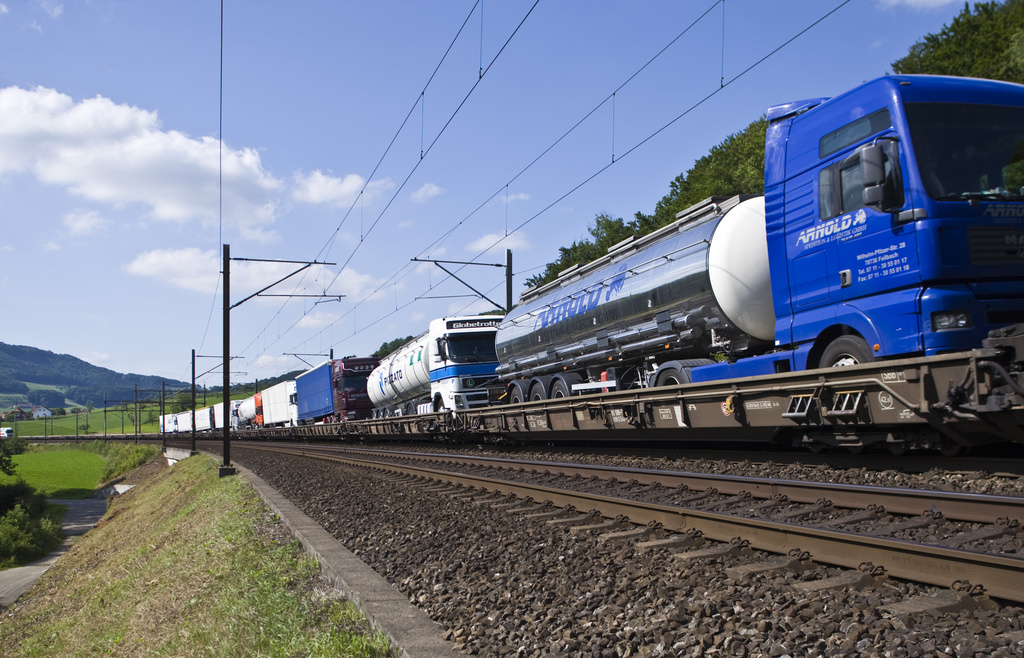
Around 1.25 million trucks passed through the Alps last year – double the target set by the government.
swissinfo.ch spoke to an environmental organisation calling for a cap-and-trade Alpine Crossing Exchange, a road hauliers’ association which says this would cause “massive economic damage” and the transport ministry, which is stuck in the middle.
On Thursday the transport ministry reported that in 2010 the number of trucks using Alpine roads had risen by 77,000 to 1.25 million, hitting the same level as before the economic crisis.
It said this was “far above” the goal of 650,000 – set for after the opening of the Gotthard Base Tunnel in 2017 – and the interim goal of one million by the end of 2011. Overall, more freight was transported by rail than road in 2010 at 62.7 per cent of all goods. This was slightly higher than in 2009 (60.9 per cent).
“This is what we expected – if the economy improves, the number of trucks will increase – but it’s still too much,” Thomas Bolli, spokesman for the Alpine Initiative, told swissinfo.ch. “They’ll never reach their targets with current policies.”
The non-governmental organisation won a nationwide vote in 1994 calling for goods transport to be taken off the road and put on rail. But it’s had little success in implementing a policy to halve the number of trucks transiting the country within a decade.
“The government isn’t doing enough to get traffic from the roads onto the railways. Every year we repeat that we need an Alpine Crossing Exchange to reach the goals written in the constitution and the law,” Bolli said.
An Alpine Crossing Exchange would be based on the “cap-and-trade” principle, with the total number of annually permissible journeys being converted into alpine crossing rights. Crossing rights would be exchanged for alpine crossing units, which would initially be auctioned off and could then be freely bought and sold on the market, their price being determined by supply and demand.
Heavy vehicle fee
“The cabinet supports this idea,” Annetta Bundi, spokeswoman for the transport ministry, told swissinfo.ch.
“With the freight relocation law, parliament has created the basis so that the cabinet can agree constitutional contracts for an internationally accepted Alpine Crossing Exchange.”
According to law, the government can submit extra measures to parliament should the target not be met.
Bundi said one of the measures promoted by Switzerland was the performance-related heavy vehicle fee (HVF), a federal tax levied on the basis of total weight, emission level and kilometres driven (see link).
“Without this and other measures such as supporting combined traffic [using two or more means of transport to move goods], there would be several hundred thousand more trucks on Alpine roads.”
She added that the HVF had also improved capacity efficiency, reduced the number of empty trucks roaming Swiss roads and also contributed to an increase in greener vehicles.
Although the numbers of trucks had increased, “air pollution has not got worse,” she said.
“Illusion”
But André Kirchhofer from Astag, the Swiss road hauliers’ association, was far from convinced by the idea of an Alpine Crossing Exchange.
“The target of 650,000 trucks turned out to be an illusion a long time ago,” he told swissinfo.ch. “It’s not compatible with the needs of the economy and consumers.”
He argued that it was important to bring about a “paradigm shift” away from “one-sided measures” such as a metering system, the HVF and an Alpine Crossing Exchange and towards market reforms of the railways.
“In this respect Astag is strongly against the introduction of an Alpine Crossing Exchange. Despite the use of the word ‘exchange’, which suggests market-economy forces, it’s actually a state-imposed quota, in other words a command economy, which contradicts the free choice of transport as guaranteed in the constitution.”
This, he said, would cause “massive damage” to the Swiss economy.
For his part, Thomas Bolli said he was pessimistic given the lack of progress made in recent years. He pointed out, however, that solutions existed.
“Political will is going to decide whether we reach the goal or not,” he said.
The Alpine Initiative group was founded in 1987 and claims to have about 50,00 members and supporters.
It aims to protect the alpine environment from increasing road traffic.
The non-governmental organisation forced a nationwide vote on the issue, which was approved by the Swiss voters in 1994.
As a result, parliament and the government decided to introduce fees for heavy-goods vehicles, increasing the maximum weight of trucks from 28-40 tons and subsidising tickets for trucks which use rail transport.
The group also helped defeat a proposal in 2004 to build a second road tunnel through the Gotthard in central Switzerland.
Swiss transport policy calls for most goods transport to be taken off the road and put on trains.
The number of trucks transiting Switzerland is supposed to drop to 650,000 by 2018-2019 (one million in 2011).
In 2009 parliament decided to delay the initial target date of 2009 by ten years.
Presently about 1.25 million trucks per year pass through the Swiss Alps.
The Gotthard is on the main north-south artery through Switzerland. There are two other routes: through the Lötschberg-Simplon tunnels in the west of the country as well as the San Bernardino in eastern Switzerland

In compliance with the JTI standards
More: SWI swissinfo.ch certified by the Journalism Trust Initiative

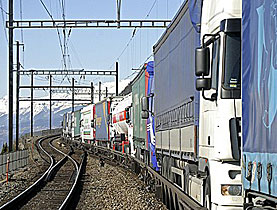
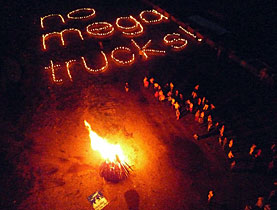
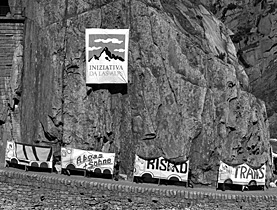
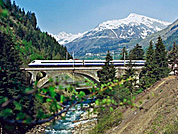
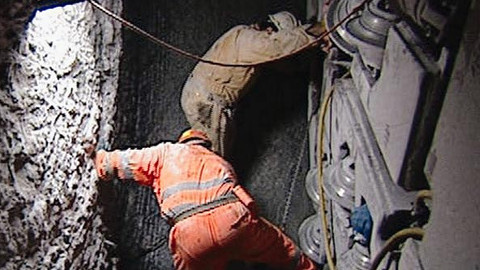
You can find an overview of ongoing debates with our journalists here. Please join us!
If you want to start a conversation about a topic raised in this article or want to report factual errors, email us at english@swissinfo.ch.